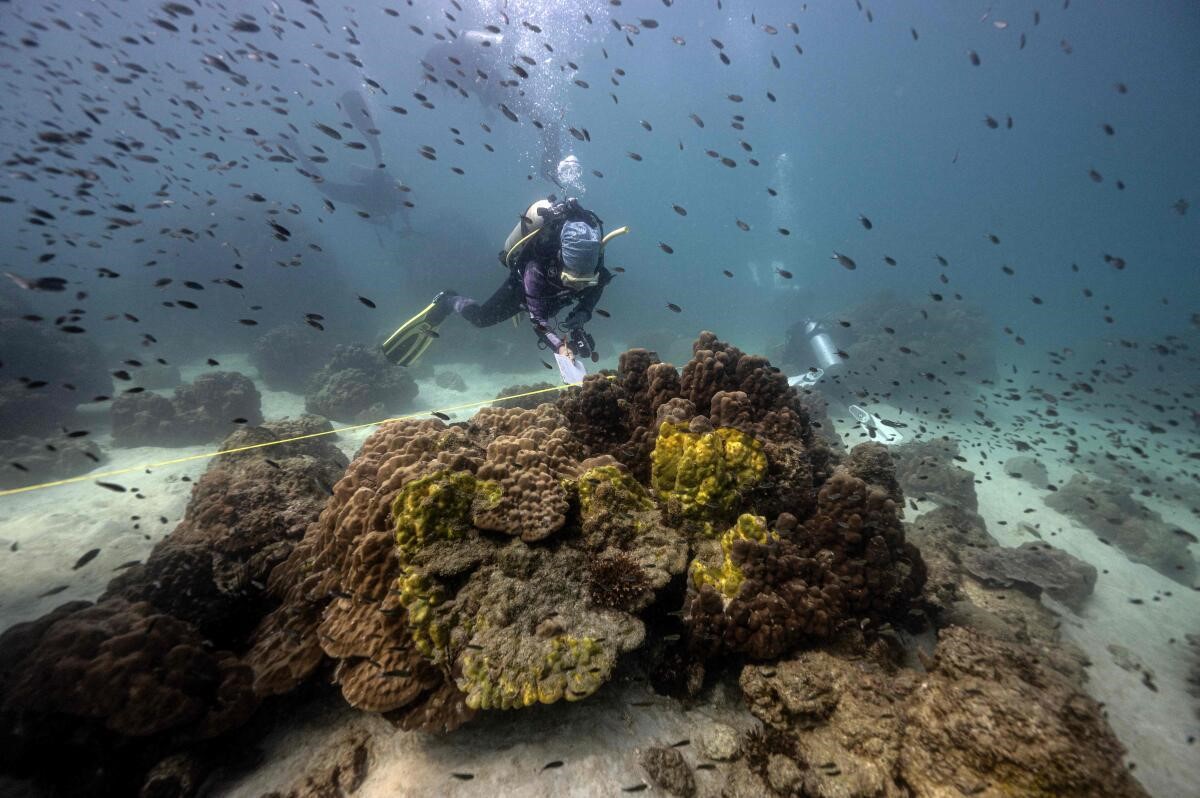Description

Disclaimer: Copyright infringement not intended.
Context: A rapidly spreading disease, commonly known as yellow band disease, is killing coral over vast stretches of the sea floor in the beautiful Samsae San Island in eastern Thailand.
Details:
- The colour of the corals turns yellow before they get destroyed.
- It was first spotted decades ago and has caused widespread damage to the reefs in the Caribbean. Over 600 acres of the sea have been infected.
- Corals cannot remain alive when they are exposed to this yellow-band disease. They will die gradually.
.jpeg)
Causes:
- Scientists believe overfishing, pollution and rising water temperatures because of climate change may be making the reefs more vulnerable to yellow-band disease.
Impact:
- The loss of coral could have a devastating impact on the ecosystem.
- The reef is “like a forest” sustaining massive amounts of life, and its death could eventually impact humans too.
- They are rushing to find a treatment.

About disease:
- Yellow-band disease (similar to Yellow Blotch disease) is a coral disease that attacks colonies of coral at a time when coral is already under stress from pollution, overfishing, and climate change.
- Yellow-band disease is a bacterial infection that spreads over coral, causing discolored bands of pale-yellow or white lesions along the surface of an infected coral colony.
- The lesions are the locations where the bacteria have killed the coral’s symbiotic photosynthetic algae, called zooxanthellae which are a major energy source for the coral.
- This cellular damage and the loss of its major energy source cause the coral to starve, and usually cause coral death. There is evidence that climate change could be worsening the disease.
Mechanism of action:
- Coral has a symbiotic relationship with zooxanthellae that provide the coral glucose, glycerol, and amino acids.
- Under certain water conditions, like fluctuating temperatures and increased nitrogenous waste, corals will appear stressed.
- Also, these conditions allow for bacteria to grow inside the coral and compete with zooxanthellae.
- The bacteria produces the characteristic pale yellow lesions and eventually kills the zooxanthellae by impairing its mitosis and its ability to carry out photosynthesis.

https://www.thehindu.com/sci-tech/energy-and-environment/watch-why-are-corals-in-thailand-getting-destroyed/article66396891.ece












